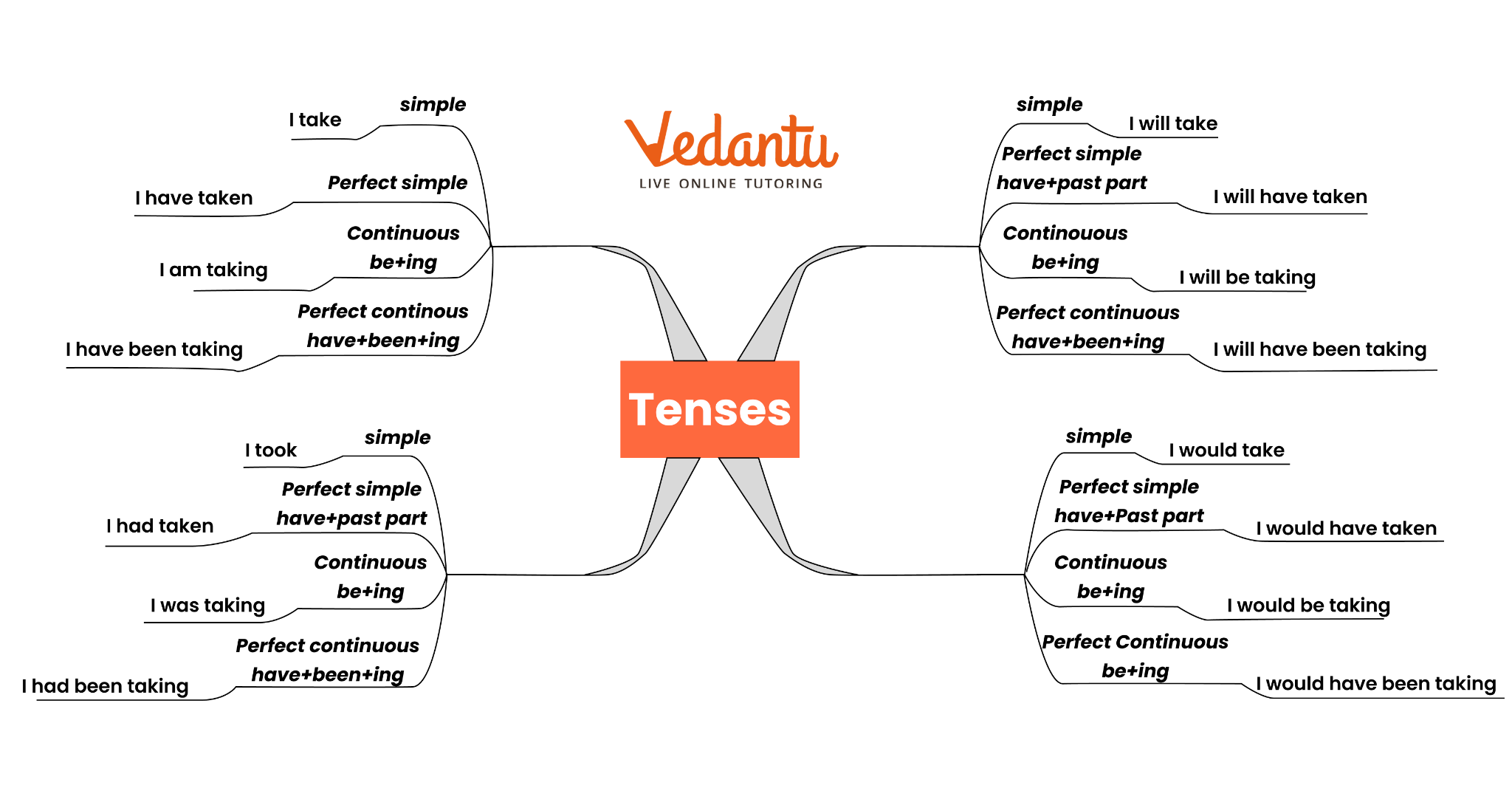




How to Identify and Use English Tenses Correctly
FAQs on Tenses Exercises: Practice English Tenses for Real Results
1. What are the three main tenses and their four aspects in English grammar?
The three main tenses in English correspond to time: the Past, Present, and Future. Each of these tenses can be further described using four aspects, which detail how the action relates to time. These aspects are:
- Simple: Used for facts, habits, or completed actions.
- Continuous (or Progressive): Used for ongoing or unfinished actions.
- Perfect: Used for actions completed before another point in time.
- Perfect Continuous: Used to show the duration of an action up to a certain point in time.
2. Why are tenses so important for clear communication in English?
Tenses are crucial because they provide context about time. They tell the listener or reader when an action or event occurred, is occurring, or will occur. Correctly using tenses helps to avoid confusion, establish a clear sequence of events, and express ideas with precision. Without proper tense usage, the meaning of a sentence can become ambiguous or be completely misunderstood.
3. What is the main difference between the Simple Past and Present Perfect tense?
The key difference lies in their connection to the present. The Simple Past (e.g., 'I visited Paris') describes an action that happened at a specific, completed time in the past with no connection to now. In contrast, the Present Perfect (e.g., 'I have visited Paris') describes a past action that has relevance or an effect on the present, or an action that happened at an unspecified time in the past.
4. How can you identify the tense of a verb in a sentence?
To identify the tense, you need to look at two things: the verb form and any auxiliary (helping) verbs. For example:
- A verb ending in '-ed' or an irregular past form (e.g., 'ate', 'went') often indicates the Simple Past.
- An auxiliary verb like 'will' or 'shall' points to the Future tense.
- The presence of 'have', 'has', or 'had' before the main verb's past participle signals a Perfect tense.
- An '-ing' verb form combined with a form of 'to be' (am, is, are, was, were) indicates a Continuous tense.
5. How do auxiliary verbs like 'do', 'be', and 'have' affect a sentence's tense?
Auxiliary verbs are fundamental to forming most tenses beyond the simple present and simple past. They work with the main verb to specify the exact timing and aspect of an action.
- 'Do'/'Does'/'Did' are used to form questions and negatives in the Simple Present and Simple Past.
- 'Be' (am, is, are, was, were) is used to form all Continuous tenses (e.g., 'She is working').
- 'Have'/'Has'/'Had' are used to form all Perfect tenses (e.g., 'He has finished').
6. Can you give an example of a sentence for the simple, continuous, and perfect aspects?
Certainly. Using the Present tense as a base, here are examples for each aspect:
- Simple Present: 'He plays football every Saturday.' (A habitual action).
- Present Continuous: 'He is playing football right now.' (An action happening at this moment).
- Present Perfect: 'He has played for the team for three years.' (An action that started in the past and continues to the present).
7. When is it correct to use the Present Continuous tense to talk about the future?
It is correct to use the Present Continuous tense for future events when you are talking about a fixed plan or definite arrangement. This implies that the preparations for the event have already been made. For example, 'I am meeting my friends for dinner tomorrow.' This is different from the Future Simple ('I will meet...'), which can express a spontaneous decision or prediction.
8. What is a common mistake to avoid when using mixed tenses in a paragraph?
A common mistake is an unnecessary or illogical shift in tense. While it's often necessary to switch tenses to describe events happening at different times, a random shift can confuse the reader. For example, writing 'She walked into the room and sees a letter on the table' is incorrect. The narrative is set in the past, so both verbs should be in the past tense: 'She walked into the room and saw a letter on the table.' Maintaining a consistent primary tense is key to clear writing.

















